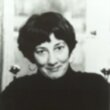Things not seen
Description
More Details
9780142407318
9780739345368
9780439456203
9780399236266
Excerpt
Similar Series From Novelist
Similar Titles From NoveList
Similar Authors From NoveList
Published Reviews
Booklist Review
Gr. 7-10. The first page is electrifying. Bobby, 15, looks at himself in the bathroom mirror and there's nobody there. No, he isn't blind. He can see. He can feel his body. But he's invisible. This is sf just on the edge of reality. Everything else is normal, and Bobby's first-person narrative takes readers through his experiences of telling his frantic parents but otherwise trying to keep it a secret. He walks outside in his Chicago neighborhood (swathed in clothes, he looks like a person). He hangs out in the university library, naked and unseen. He acts as spy in Sears corporate offices when he needs to. Of course, he can't go to school, but he's always felt pretty invisible there anyway, especially with the popular crowd. The plot details don't bear scrutiny, but Clements has lots of fun with the invisibility stuff in story and metaphor. Are there other invisible people like Bobby? Who would know? Can he find out what caused his condition and reverse it? But with all the play, there's an underlying realistic theme that's heartbreaking: Bobby meets a blind girl Alicia, who lost her sight suddenly one day. Her condition can never be reversed. To her, Bobby will always be--no matter what--invisible. He confides in her; they laugh, quarrel, help each other, and fall in love. Clements isn't heavy-handed, but readers will easily be able to imagine what it must be like to have the world disappear. Hazel Rochman.
Publisher's Weekly Review
The earnest and likable 15-year-old narrator is the principal thing not seen in Clements's (Frindle; The Jacket) fast-paced novel, set in Chicago. As the book opens, the boy discovers that he has turned invisible overnight. Bobby breaks the news to his parents who, afraid of being hounded by the media, instruct him to share his dilemma with no one. But when Bobby ventures out of the house and visits the library, he meets Alicia, a blind girl to whom he confides his secret. Their blossoming friendship injects a double meaning into the book's title. As preposterous as the teen's predicament may be, the author spins a convincing and affecting story, giving Bobby's feeling of helplessness and his frustration with his parents an achingly real edge. As his physicist father struggles to find a scientific explanation for and a solution to his son's condition, husband and wife decide that they will tell the investigating truancy officials and police that Bobby has run away. Bobby, however, becomes increasingly determined to take control of the situation and of his own destiny: "And I want to yell, It's my life! You can't leave me out of the decisions about my own life! You are not in charge here!" Equally credible is the boy's deepening connection to Alicia, who helps Bobby figure out a solution to his problem. Ages 10-14. (Mar.) (c) Copyright PWxyz, LLC. All rights reserved
School Library Journal Review
Gr 6 Up-"-I turn on the bathroom light and wipe the fog off the mirror to comb my hair.-I'm not there. That's what I'm saying. I'm. Not. There." Thus starts the adventure of Bobby Phillips, who wakes up one morning to find that somehow he has turned invisible. The 15-year-old and his parents live with the worry of what happens if they can't figure out how to reverse his condition. With a nod in the direction of H. G. Wells's Invisible Man, Clements allows readers to speculate what it would be like to be invisible. As they see Bobby deal with his situation, they also experience his fears of being alone, unable to talk to his friends, or to tell anyone for fear of the consequences. He reaches out to a blind girl, Alicia Van Dorn, and together they begin to fight back as best as they can. The quest for visibility becomes even more frantic when the school officials and the local police decide that Bobby is the victim of foul play. The threat of having his parents thrown in jail for his own murder makes the teen even more desperate to find out what happened to him. Clements's story is full of life; it's poignant, funny, scary, and seemingly all too possible. The author successfully blends reality with fantasy in a tale that keeps his audience in suspense until the very end.-Saleena L. Davidson, South Brunswick Public Library, Monmouth Junction, NJ (c) Copyright 2010. Library Journals LLC, a wholly owned subsidiary of Media Source, Inc. No redistribution permitted.
Horn Book Review
(Middle School) For a slightly older audience than Frindle fans, Clements concocts a surprisingly fresh story from a familiar premise: what if you woke up one day to discover that you were invisible? This is exactly what happens to Bobby one February morning in Chicago's Hyde Park. His mom wants to call a doctor ("Yeah," thinks Bobby, "let's call one of those Invisible Teenager Specialists"); his dad, a physicist, is intrigued by the phenomenon; unfortunately (for them but not for the reader), both are soon injured in a car accident, leaving Bobby to handle his problem on his own. While the setup never becomes convincing, and the "scientific" solution to Bobby's invisibility is preposterous, Clements does a great job of placing readers in Bobby's dilemma. He makes us see just how complicated invisibility could be-like when you meet a girl and she doesn't know you're naked, first, because you're invisible, and second, because she's blind. If the blind character, Alicia, allows the book some easy virtue, it's well intentioned and easily digestible, and her friendship with Bobby is empathetically evoked-could it be love? The University of Chicago setting is equally authentically drawn; Bobby is a student at the Lab School, and what we have here is a well-done school-and-family story with a not-so-invisible wrinkle. From HORN BOOK, (c) Copyright 2010. The Horn Book, Inc., a wholly owned subsidiary of Media Source, Inc. No redistribution permitted.
Kirkus Book Review
Clements (The Jacket, above, etc.) looks beyond grade school for the first time with a multifaceted rumination on selfhood and various forms of invisibility. Fifteen-year-old Bobby wakes up invisible one morning. His equally flummoxed parents, quickly grasping the personal and social dangers should the news get out, urge him to hole up at home. But boredom, worry, and the mutinous thought that he should have some say in the matter soon lead him into a string of adventurous outings, both wrapped up Invisible Man-style, and stark naked. Clements cranks up the stress with an ensuing traffic accident that puts both parents into the hospital, and, as weeks pass, the increasingly persistent attentions of the governmental child-welfare machine. He also provides a needed confidante for Bobby in Alicia, a teenager blinded by a head injury two years before and no stranger herself to that sense of being unseen. Both feeling angry, scared, and vulnerable, their relationship gets off to a wonderfully tumultuous start, but builds on a foundation of caring and loyalty into something solid enough to survive Bobby's final return to visibility. As always, Clements's genius for developing credible plot lines (even from oddball premises) makes suspension of disbelief no problem. His characters, each one fundamentally decent-there is never a chance that Bobby will go the way of the transparent voyeur in Cormier's Fade (1988), for instance-are easy to like. A readable, thought-provoking tour de force, alive with stimulating ideas, hard choices, and young people discovering bright possibilities ahead. (Fiction. 11-15)
Booklist Reviews
/*Starred Review*/ Gr. 7-10. The first page is electrifying. Bobby, 15, looks at himself in the bathroom mirror and there's nobody there. No, he isn't blind. He can see. He can feel his body. But he's invisible. This is sf just on the edge of reality. Everything else is normal, and Bobby's first-person narrative takes readers through his experiences of telling his frantic parents but otherwise trying to keep it a secret. He walks outside in his Chicago neighborhood (swathed in clothes, he looks like a person). He hangs out in the university library, naked and unseen. He acts as spy in Sears corporate offices when he needs to. Of course, he can't go to school, but he's always felt pretty invisible there anyway, especially with the popular crowd. The plot details don't bear scrutiny, but Clements has lots of fun with the invisibility stuff in story and metaphor. Are there other invisible people like Bobby? Who would know? Can he find out what caused his condition and reverse it? But with all the play, there's an underlying realistic theme that's heartbreaking: Bobby meets a blind girl Alicia, who lost her sight suddenly one day. Her condition can never be reversed. To her, Bobby will always be--no matter what--invisible. He confides in her; they laugh, quarrel, help each other, and fall in love. Clements isn't heavy-handed, but readers will easily be able to imagine what it must be like to have the world disappear. ((Reviewed April 15, 2002)) Copyright 2002 Booklist Reviews
Publishers Weekly Reviews
The earnest and likable 15-year-old narrator is the principal thing not seen in Clements's (Frindle; The Jacket) fast-paced novel, set in Chicago. As the book opens, the boy discovers that he has turned invisible overnight. Bobby breaks the news to his parents who, afraid of being hounded by the media, instruct him to share his dilemma with no one. But when Bobby ventures out of the house and visits the library, he meets Alicia, a blind girl to whom he confides his secret. Their blossoming friendship injects a double meaning into the book's title. As preposterous as the teen's predicament may be, the author spins a convincing and affecting story, giving Bobby's feeling of helplessness and his frustration with his parents an achingly real edge. As his physicist father struggles to find a scientific explanation for and a solution to his son's condition, husband and wife decide that they will tell the investigating truancy officials and police that Bobby has run away. Bobby, however, becomes increasingly determined to take control of the situation and of his own destiny: "And I want to yell, It's my life! You can't leave me out of the decisions about my own life! You are not in charge here!" Equally credible is the boy's deepening connection to Alicia, who helps Bobby figure out a solution to his problem. Ages 10-14. (Mar.) Copyright 2001 Cahners Business Information.
Publishers Weekly Reviews
A 15-year-old boy discovers that he has turned invisible overnight and becomes determined to take control of the situation and of his own destiny. "As preposterous as the teen's predicament may be, the author spins a convincing and affecting story," according to PW. Ages 10-up. (Mar.)n Copyright 2004 Reed Business Information.
School Library Journal Reviews
Gr 6 Up-"-I turn on the bathroom light and wipe the fog off the mirror to comb my hair.-I'm not there. That's what I'm saying. I'm. Not. There." Thus starts the adventure of Bobby Phillips, who wakes up one morning to find that somehow he has turned invisible. The 15-year-old and his parents live with the worry of what happens if they can't figure out how to reverse his condition. With a nod in the direction of H. G. Wells's Invisible Man, Clements allows readers to speculate what it would be like to be invisible. As they see Bobby deal with his situation, they also experience his fears of being alone, unable to talk to his friends, or to tell anyone for fear of the consequences. He reaches out to a blind girl, Alicia Van Dorn, and together they begin to fight back as best as they can. The quest for visibility becomes even more frantic when the school officials and the local police decide that Bobby is the victim of foul play. The threat of having his parents thrown in jail for his own murder makes the teen even more desperate to find out what happened to him. Clements's story is full of life; it's poignant, funny, scary, and seemingly all too possible. The author successfully blends reality with fantasy in a tale that keeps his audience in suspense until the very end.-Saleena L. Davidson, South Brunswick Public Library, Monmouth Junction, NJ Copyright 2001 Cahners Business Information.
































